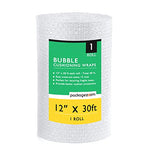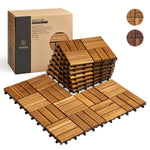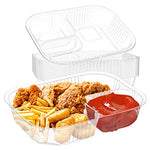You have no items in your shopping cart.

Photo Credit: pixelshot/canva
In today's world, environmental consciousness is of paramount importance. We all play a role in preserving the planet for future generations. One simple yet impactful way to contribute to this cause is by correctly segregating our waste. In this article, we'll delve into the practice of segregating plastic and glass containers into separate bins. Not only does this promote recycling efficiency, but it also helps reduce pollution and conserve resources.
Please Place Plastic and Glass Containers in Separate Bins
When it comes to waste management, separating plastic and glass containers is essential. This practice ensures that both materials can be efficiently recycled, reducing the strain on our environment. Here's why it matters:
1. Environmental Impact
Separating plastic and glass containers in separate bins significantly reduces environmental harm. When mixed, they can contaminate each other, making recycling more challenging and less effective. By segregating them, we make recycling facilities' jobs easier, ultimately lowering our carbon footprint.
2. Enhanced Recycling
Plastic and glass recycling processes are distinct, each with its own requirements. By keeping them separate, we ensure that both materials are recycled to their fullest potential. This results in higher-quality recycled products and a more sustainable future.
3. Pollution Prevention
When plastic and glass containers are not separated, there's a greater risk of breakage and spillage, leading to litter and pollution. Segregating these materials helps prevent this by keeping them intact during disposal and transportation.
The Right Way to Segregate
Properly segregating plastic and glass containers is as crucial as the act itself. Here's a step-by-step guide to ensure you do it correctly:
1. Get Separate Bins
The first step is to acquire separate bins designated for plastic and glass. These bins should be clearly labeled to avoid any confusion.
2. Rinse Containers
Before disposing of plastic and glass containers, rinse them thoroughly to remove any residue or leftover contents. Clean containers are easier to recycle.
3. No Mixed Items
Never mix plastic and glass containers in the same bin. Place plastic items in the designated plastic bin and glass items in the glass bin.
4. Recyclable Materials Only
Ensure that you're only putting recyclable items in these bins. Contaminants can disrupt the recycling process.
FAQs
Can I recycle plastic and glass together?
No, it's essential to separate plastic and glass containers to facilitate efficient recycling.
What happens if I mix plastic and glass containers?
Mixing these materials can lead to contamination, making recycling less effective and more costly.
Are there any benefits to separating plastic and glass?
Yes, it reduces environmental impact, enhances recycling, and prevents pollution.
Can I put non-recyclable plastic and glass items in these bins?
No, only recyclable plastic and glass containers should be placed in the designated bins.
Is it necessary to rinse the containers before recycling them?
Yes, rinsing ensures that the containers are clean and ready for recycling.
Where can I find designated bins for plastic and glass?
You can purchase them at home improvement stores or contact your local waste management authority.
Segregating plastic and glass containers into separate bins is a simple yet powerful way to contribute to a cleaner, greener future. By following these guidelines and understanding the importance of proper waste disposal, you can play your part in preserving our planet for generations to come.
Top Picks For Trash Bag
Introducing our 15 Gallon Tall Kitchen Bags! These bags are perfect for everyday kitchen waste and feature a strong and reliable design.
"These bags have made my kitchen cleanup a breeze. Highly recommend them!"
- Emily Jarred
"I've been using these bags for months now, and they never disappoint. Great quality!"
- Michael Anderson
Introducing our 39 Gallon Heavy-Duty Trash Bags! These bags are perfect for handling larger loads of trash and are built to resist tears and leaks.
"These bags are the best I've ever used. They can handle even the toughest trash."
- Lewis Martinez
"I'm impressed by the durability of these bags. They never fail to hold up, even when filled to the brim!"
- Jessica Roberts
Introducing our 33 Gallon Heavy-Duty Trash Bags! These bags are designed to handle heavy loads of trash, making them ideal for residential and commercial use.
"I've never had a bag that could handle so much trash. These bags are a game-changer!"
- Samantha Turner
"I run a small restaurant, and these bags are perfect for our needs. They're strong, reliable, and affordable!"
- David Patterson
Introducing our 55 Gallon Contractor Trash Bags! These bags are designed to handle heavy, bulky trash and are commonly used in construction and renovation projects.
"These bags are an absolute lifesaver on our construction sites. They can handle anything we throw at them!"
- Mark Thompson
"I've used many different contractor bags, and these are by far the best. They never let me down!"
- Rachel Collins

















